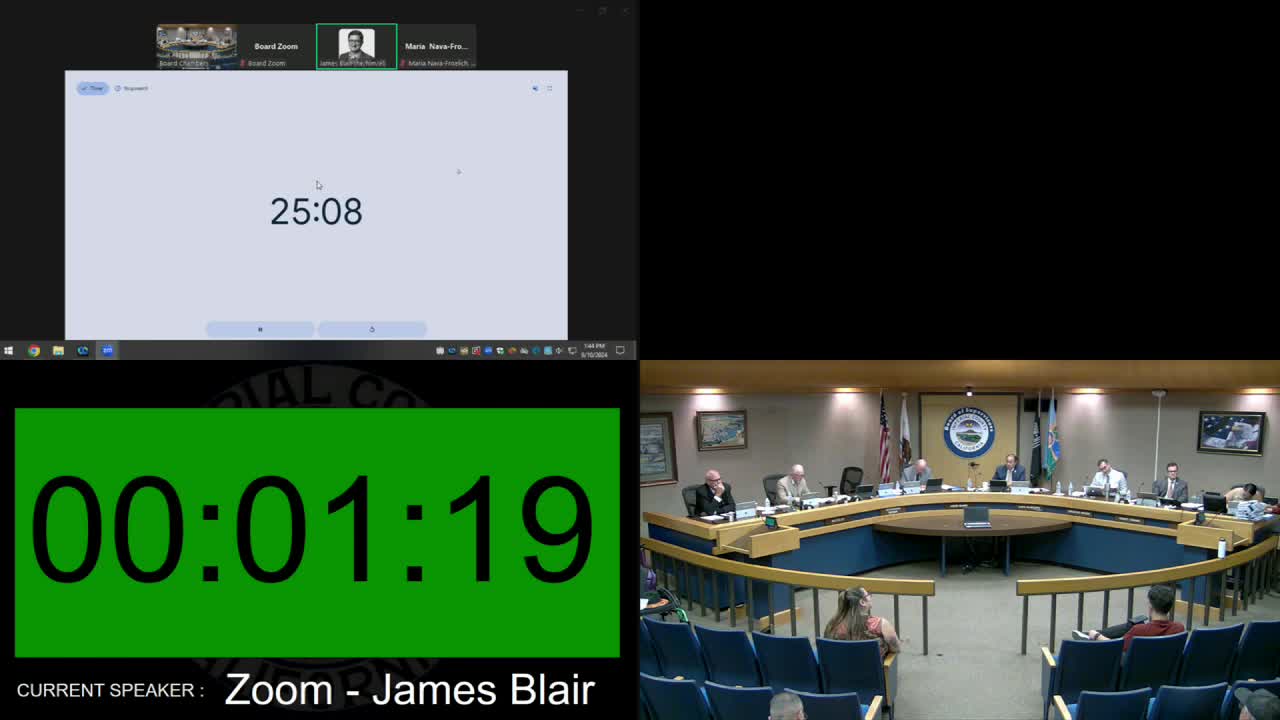Community leaders demand fair funding for affected tribes
September 10, 2024 | Imperial County, California
This article was created by AI summarizing key points discussed. AI makes mistakes, so for full details and context, please refer to the video of the full meeting. Please report any errors so we can fix them. Report an error »

In a recent government meeting, discussions centered around the allocation of funding for community projects, particularly in relation to the impacts on local tribes and the distribution of resources among affected communities. One participant expressed concerns that the proposed funding plan, framed as a 15/15 split, is misleading. They argued that when excluding the 20% earmarked for salt and sea restoration, the actual distribution appears to favor the county significantly more, with estimates suggesting a 15/85 or even a 40/60 split in favor of the county.
The speaker emphasized the need for a clearer rationale behind the allocation, questioning why population size should dictate funding distribution. They suggested that the county could enhance community involvement by allowing the Quality of Life Advisory Committee to prioritize projects within the county's proposed allocation. Additionally, they called for the 60% allocation to be independent of development mitigation costs, advocating for a focus on projects that directly benefit affected communities.
Maria Nava Froelich, another participant, voiced her support for the funding plan, highlighting its potential to enhance public safety, land use, and health services. She acknowledged the importance of community engagement in the planning process, referencing her participation in workshops and advocating for a portion of lithium project benefits to return to the community. She noted that the recent legislation, SB 125, commits to returning 30% of lithium benefits to local areas, which she views as a positive step toward addressing community needs.
The discussions reflect ongoing efforts to ensure that funding plans are equitable and responsive to the needs of directly affected communities, particularly in the context of significant development projects in the region.
The speaker emphasized the need for a clearer rationale behind the allocation, questioning why population size should dictate funding distribution. They suggested that the county could enhance community involvement by allowing the Quality of Life Advisory Committee to prioritize projects within the county's proposed allocation. Additionally, they called for the 60% allocation to be independent of development mitigation costs, advocating for a focus on projects that directly benefit affected communities.
Maria Nava Froelich, another participant, voiced her support for the funding plan, highlighting its potential to enhance public safety, land use, and health services. She acknowledged the importance of community engagement in the planning process, referencing her participation in workshops and advocating for a portion of lithium project benefits to return to the community. She noted that the recent legislation, SB 125, commits to returning 30% of lithium benefits to local areas, which she views as a positive step toward addressing community needs.
The discussions reflect ongoing efforts to ensure that funding plans are equitable and responsive to the needs of directly affected communities, particularly in the context of significant development projects in the region.
View full meeting
This article is based on a recent meeting—watch the full video and explore the complete transcript for deeper insights into the discussion.
View full meeting
